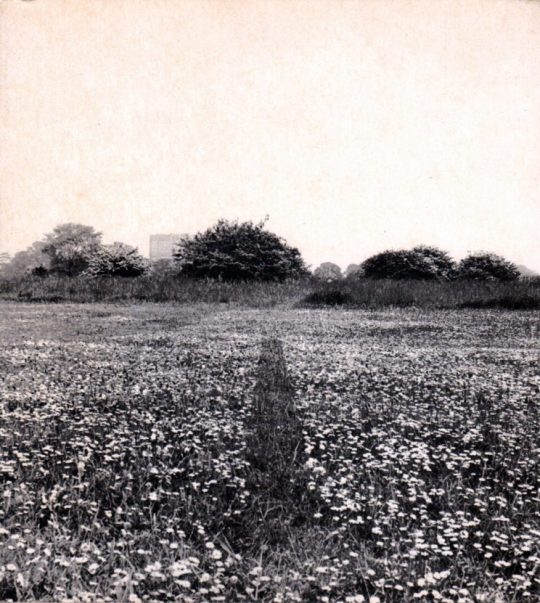#Germano Celant
Photo
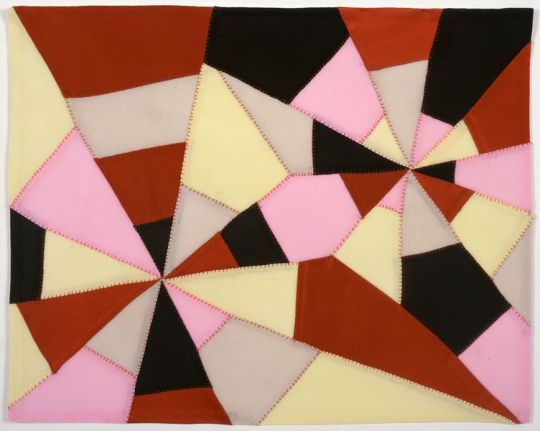
Louise Bourgeois, Untitled, (fabric), 2006 [© The Easton Foundation/VAGA at ARS, NY]. From: Louise Bourgeois: ‘The Fabric Works’, Curated by Germano Celant, Hauser & Wirth, London, October 15 – December 18, 2010
159 notes
·
View notes
Text
Di Ugo Mulas la fotografa Nanda Lanfranco avverte tutta la carica innovativa
Questa ricerca, fin dal suo primo configurarsi, si è delineata come «una proposta di metodo per la ricostruzione storica visuale degli eventi artistici effimeri contemporanei» <1, all’interno della relazione che, attraverso la riproducibilità fotografica, intercorre tra la performance e l’archivio.Due termini – performance e archivio – che sembrano essere concettualmente molto distanti tra loro:…
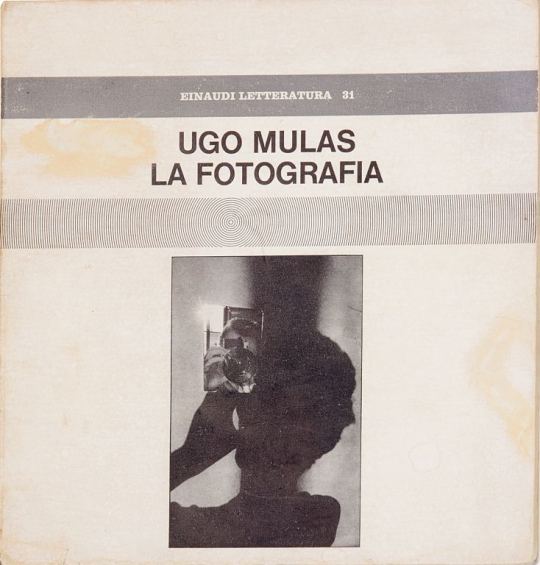
View On WordPress
#1967#1981#Anna Costantini#anni#archivio#arte#Carlo Fedeli#critico#curatore#Eugenio Battisti#Eugenio Carmi#fotografia#galleria#Genova#Germano Celant#Gian Lupo Osti#Gianfranco Bruno#Hasselblad#Ida Gianelli#Italsider#Jack Smith#Land Art#Liguria#Marcatrè#Nanda Lanfranco#Ottanta#povera#rivista#Samangallery#Settanta
2 notes
·
View notes
Text
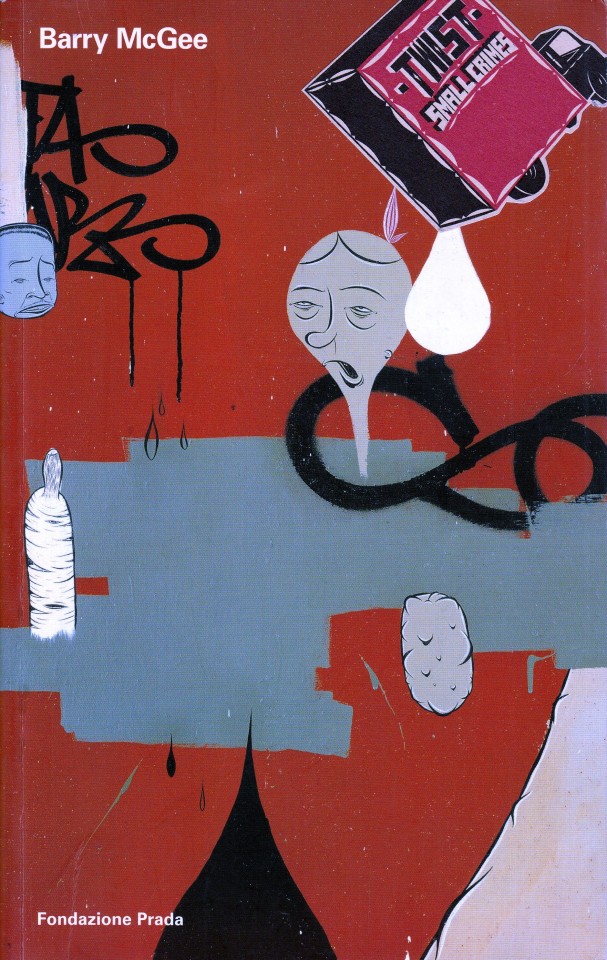

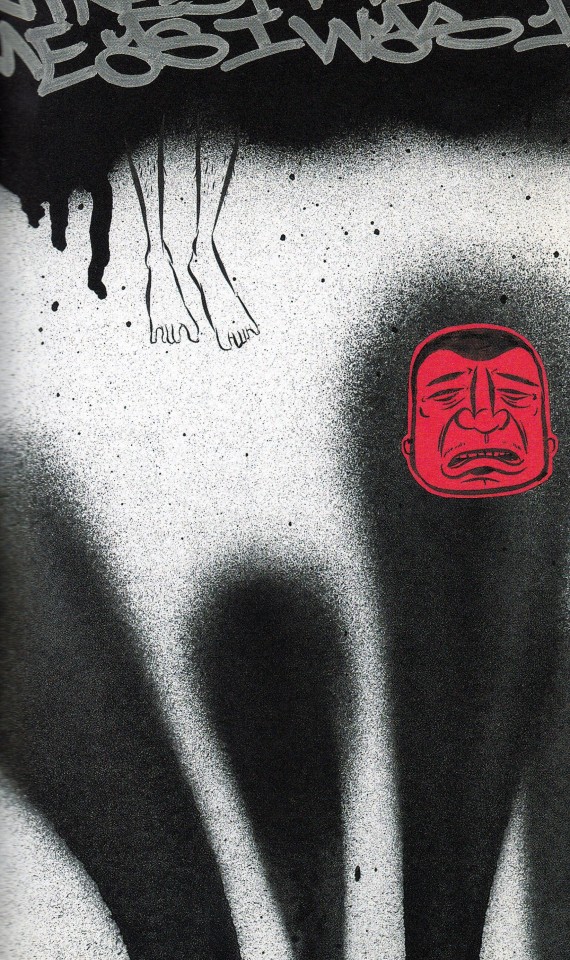

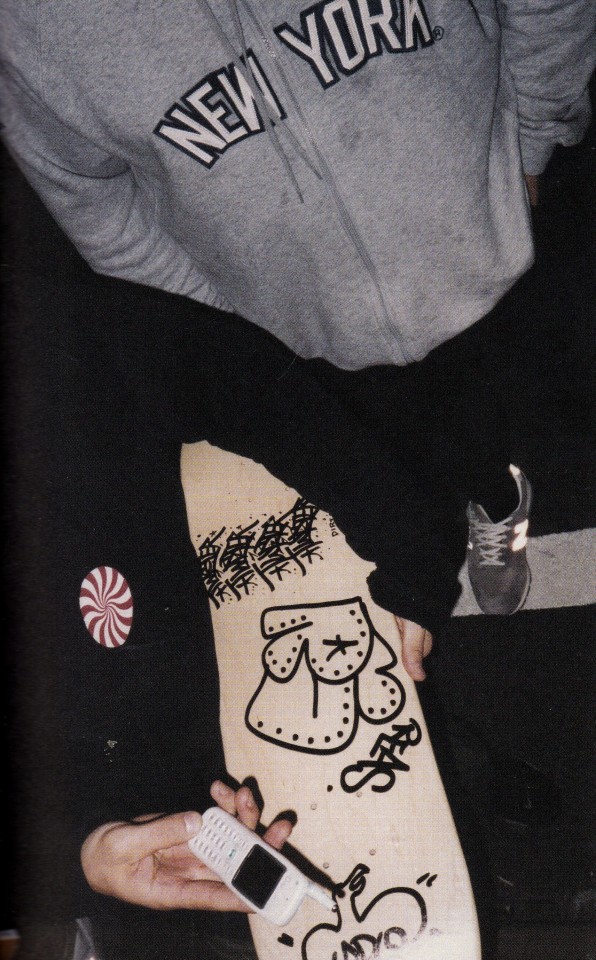
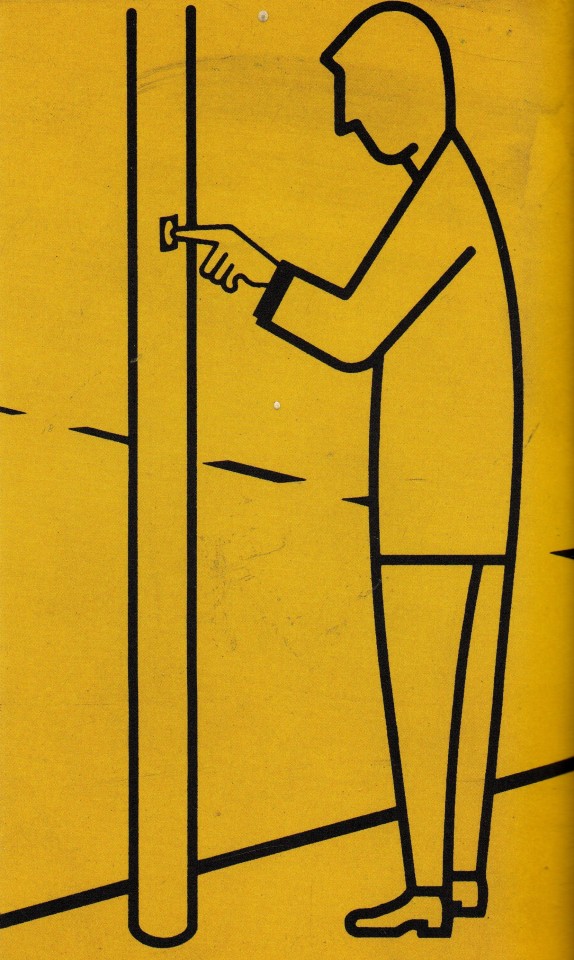
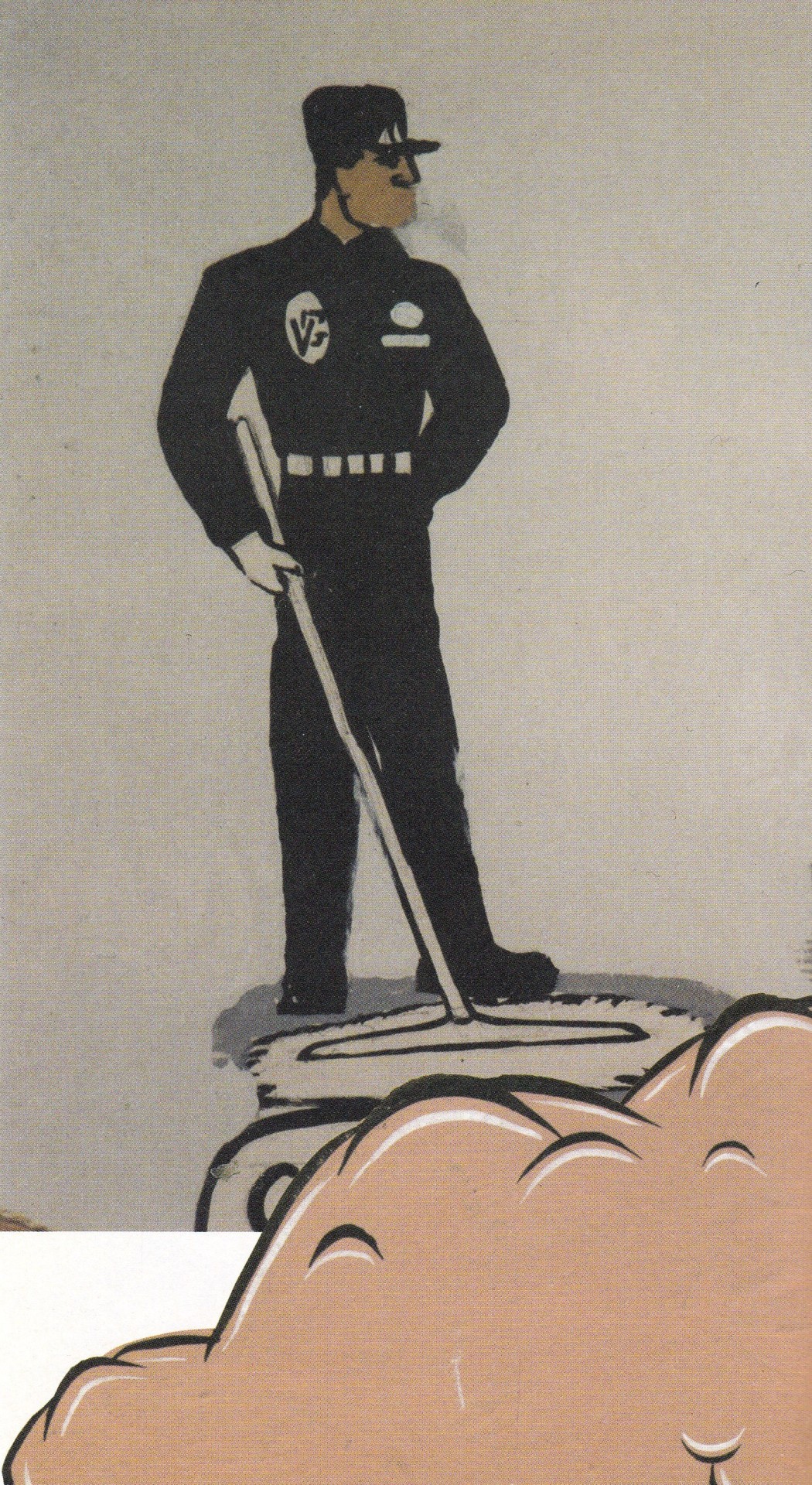

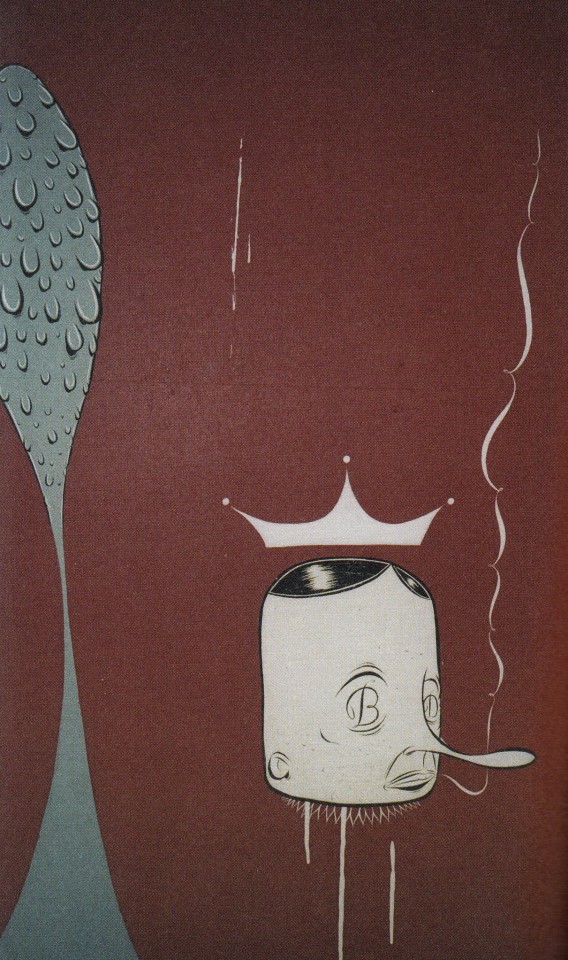


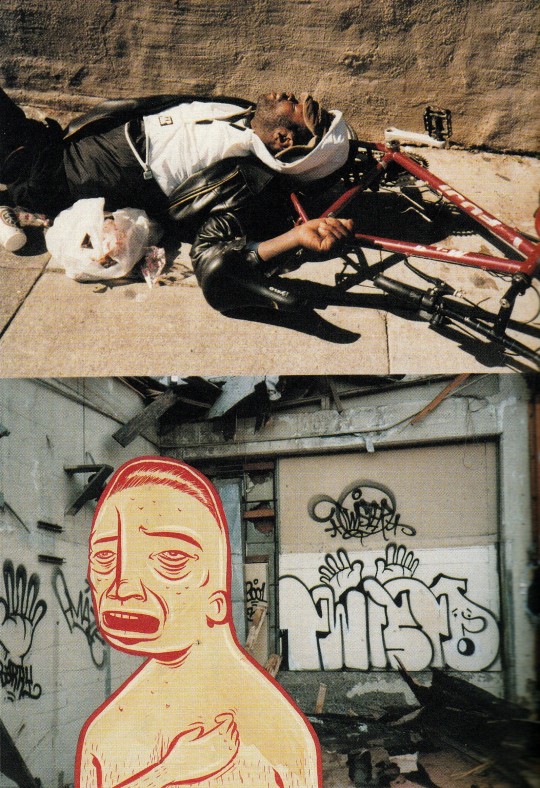
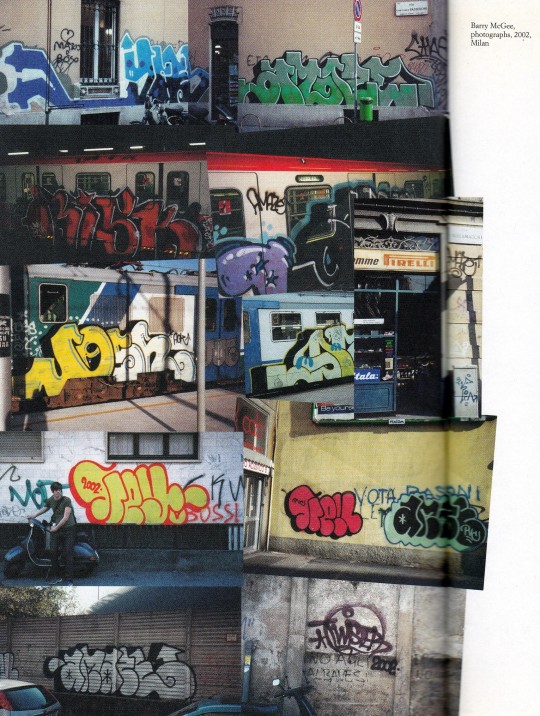

Barry McGee
General Editor Germano Celant
Texts Germano Celant, Barry McGee
Preface by Miuccia Prada and Patrizio Bertelli
Publication Design Pierluigi Cerri with Dario Zannier
Fondazione Prada, Milano 2002, 316 pagine, 300 ill., 15x24cm, ISBN 9788887029222
euro 70,00
email if you want to buy : [email protected]
Exhibition "Barry McGee" at the Fondazione Prada in Milan, 11 April - 9 June 2002
Intended specifically for the Fondazione Prada's space in Via Fogazzaro, this huge installation devised by McGee is entitled Today Pink (2002). This is entered through an unusual and decidedly bewildering passage, which, when one emerges, turns out to be the back of an overturned truck. In the exhibition space one finds oneself in a chaotic scene, consisting of abandoned vehicles covered with graffiti, figures painted on huge metallic or monochrome walls, and fragments of lighter, fluctuating objects. This is a world rich in signs and symbols that contain references to life in today's cities and are linked to images of American culture such as the large, enigmatic figure of a Native American painted upside down on a wall made of rusty iron sheets. As in the aftermath of a road accident, two abandoned vehicles invade the space. On their bodies the artist has painted his familiar faces, which, with their sad eyes, are a reminder of bowed, resigned humanity. The presence of this male figure is kind of like this everyman, and it's very specific to San Francisco, where there's a huge homeless population that everyone wants to be free of. The subject is to do with graffiti and the homeless kind of like an outcast, things that the city is trying to get rid of, or trying to hide, or pretending doesn't exist. On the walls, the dominant colour is red. This refers to a detail of the urban environment that has inspired the artist: In Chinatown in San Francisco the doors are painted red. They are great surfaces, they attract me a lot. Red is the colour of life.* Innumerable drawings appear on all the walls, following each other without a gap.
Here the rapid gesture is interwoven with a clear, delicate line that depicts a world of images realized with a wide range of techniques (enamel, acrylics, spray paint, chalk and pencil): the result is a veritable crowd of human faces. Dominating the white space is a huge male figure with a childlike face: wearing black pants and a lightcoloured shirt, it has the severity and majesty of the Mexican murals.
The intensity of the installation is reinforced by the presence of a bunches liquor bottles, used by McGee as supports for his paintings, together with a large number of miscellaneous multicoloured objects such as painted cases, road signs, table napkins, dry leaves, shop signs, panels, cast-off clothes and small drawings by the artist and by people dear to him.
24/07/23
orders to: [email protected]
ordini a: [email protected]
twitter:@fashionbooksmi
instagram: fashionbooksmilano
designbooksmilano
tumblr: fashionbooksmilano
designbooksmilano
#Barry Mc Gee#art exhibition catalogue#Fondazione Prada Milano 2002#Germano Celant#Pierluigi Cerri#art books#fashionbooksmilano
3 notes
·
View notes
Text
Pino Pascali, genio eclettico e dirompente

Article
(Image: Pino Pascali, Vedova Blu, 1968. VI Biennale Romana, Palazzo delle Esposizioni, Roma, 1968. Foto di Claudio Abate © Archivio Claudio Abate)
#Pino Pascali#Scultura#Arte Povera#Fondazione Prada#SKMP2#L'Attico#Fabio Sargentini#Bachi da setola#Vedova blu#Carla Lonzi#Germano Celant#Arte italiana
0 notes
Text
Di Ugo Mulas la fotografa Nanda Lanfranco avverte tutta la carica innovativa
Questa ricerca, fin dal suo primo configurarsi, si è delineata come «una proposta di metodo per la ricostruzione storica visuale degli eventi artistici effimeri contemporanei» <1, all’interno della relazione che, attraverso la riproducibilità fotografica, intercorre tra la performance e l’archivio.Due termini – performance e archivio – che sembrano essere concettualmente molto distanti tra loro:…
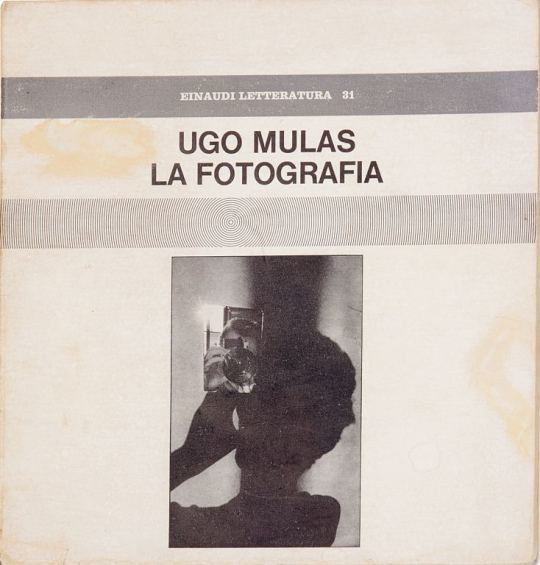
View On WordPress
#1967#1981#Anna Costantini#anni#archivio#arte#Carlo Fedeli#critico#curatore#Eugenio Battisti#Eugenio Carmi#fotografia#galleria#Genova#Germano Celant#Gian Lupo Osti#Gianfranco Bruno#Hasselblad#Ida Gianelli#Italsider#Jack Smith#Land Art#Liguria#Marcatrè#Nanda Lanfranco#Ottanta#povera#rivista#Samangallery#Settanta
1 note
·
View note
Text
Di Ugo Mulas la fotografa Nanda Lanfranco avverte tutta la carica innovativa
Questa ricerca, fin dal suo primo configurarsi, si è delineata come «una proposta di metodo per la ricostruzione storica visuale degli eventi artistici effimeri contemporanei» <1, all’interno della relazione che, attraverso la riproducibilità fotografica, intercorre tra la performance e l’archivio.Due termini – performance e archivio – che sembrano essere concettualmente molto distanti tra loro:…

View On WordPress
#1967#1981#Anna Costantini#anni#archivio#arte#Carlo Fedeli#critico#curatore#Eugenio Battisti#Eugenio Carmi#fotografia#galleria#Genova#Germano Celant#Gian Lupo Osti#Gianfranco Bruno#Hasselblad#Ida Gianelli#Italsider#Jack Smith#Land Art#Liguria#Marcatrè#Nanda Lanfranco#Ottanta#povera#rivista#Samangallery#Settanta
0 notes
Text
Di Ugo Mulas la fotografa Nanda Lanfranco avverte tutta la carica innovativa
Questa ricerca, fin dal suo primo configurarsi, si è delineata come «una proposta di metodo per la ricostruzione storica visuale degli eventi artistici effimeri contemporanei» <1, all’interno della relazione che, attraverso la riproducibilità fotografica, intercorre tra la performance e l’archivio.Due termini – performance e archivio – che sembrano essere concettualmente molto distanti tra loro:…
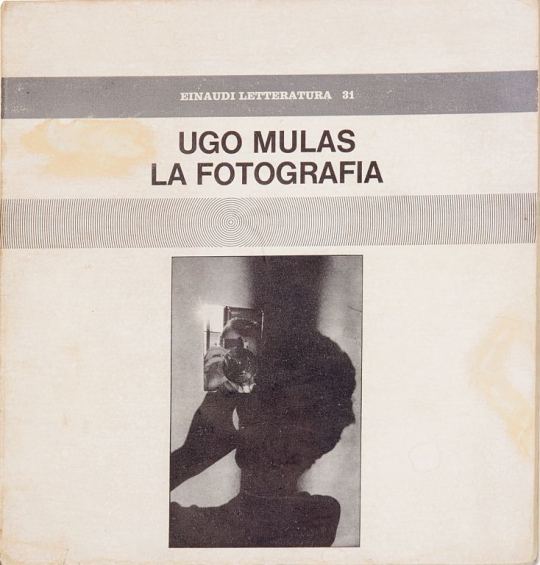
View On WordPress
#1967#1981#Anna Costantini#anni#archivio#arte#Carlo Fedeli#critico#curatore#Eugenio Battisti#Eugenio Carmi#fotografia#galleria#Genova#Germano Celant#Gian Lupo Osti#Gianfranco Bruno#Hasselblad#Ida Gianelli#Italsider#Jack Smith#Land Art#Liguria#Marcatrè#Nanda Lanfranco#Ottanta#povera#rivista#Samangallery#Settanta
0 notes
Text
Di Ugo Mulas la fotografa Nanda Lanfranco avverte tutta la carica innovativa
Questa ricerca, fin dal suo primo configurarsi, si è delineata come «una proposta di metodo per la ricostruzione storica visuale degli eventi artistici effimeri contemporanei» <1, all’interno della relazione che, attraverso la riproducibilità fotografica, intercorre tra la performance e l’archivio.Due termini – performance e archivio – che sembrano essere concettualmente molto distanti tra loro:…
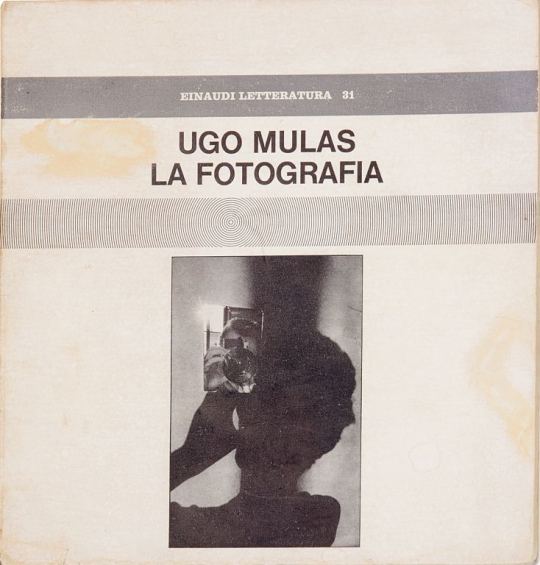
View On WordPress
#1967#1981#Anna Costantini#anni#archivio#arte#Carlo Fedeli#critico#curatore#Eugenio Battisti#Eugenio Carmi#fotografia#galleria#Genova#Germano Celant#Gian Lupo Osti#Gianfranco Bruno#Hasselblad#Ida Gianelli#Italsider#Jack Smith#Land Art#Liguria#Marcatrè#Nanda Lanfranco#Ottanta#povera#rivista#Samangallery#Settanta
0 notes
Video
Leaving intact the value of the existence of things by Russell Moreton
Via Flickr:
russellmoreton.blogspot.com/ Futuro, Presente, Passato: Remembering Germano Celant (1940–2020) Shumon Basar and Hans Ulrich Obrist www.e-flux.com The art historian, critic, and curator Germano Celant passed away on April 29, 2020, in Milan. Perennially clad in black, his hair a mane of swept-back white, he was as distinctive a physical presence as his presence has been in the art of the twentieth and twenty-first centuries. Described to us once as “a living Vasari”—a reference to the pioneering sixteenth-century author of Lives of the Most Excellent Painters, Sculptors, and Architects—Celant’s sustained output over the last six decades is a map that connects Italian avant-gardes to accelerated internationalism. Celant’s love for history’s radical turns in turn became the very engine through which he managed to shape institutions old and new. Celant produced and reproduced reality, par excellence. Here, we recall how he did this, and why that mattered. Baroque Beginnings Celant studied the Renaissance and the Baroque with the legendary art historian Eugenio Battisti at the University of Genoa in the early 1960s. Battisti’s 1962 book, L’antirinascimento (The Anti-Renaissance), became one of Celant’s formative influences. L’antirinascimento was later described by Christopher S. Wool as covering “a whole range of material and topics that don’t fit—automata, magic and talismanic images, wonders and portents, the Wunderkammer, astrology, alchemy, the topoi of the witch and the old man.” This eclectic synthesis of knowledge fields became a model for what Celant would later pursue. And from Battisti’s understanding of the Baroque, Celant told us he discovered that “there was no distinction between architecture, design, decoration.” What emerges is a total space where disparate categories can meet. The Baroque’s heightened use of sensory effects to stage drama and emotion, the “need to be surrounded by something,” as Celant said, also became the DNA for all that was to follow in his output. Guerrilla Warfare In 1963, Celant started to write for Marcatré, the leading interdisciplinary magazine in Italy, where art sat alongside cinema, design, and theory. Soon he also joined the architectural journal Casabella. In his capacity as art critic for both publications, he began to visit and befriend artists of previous generations, such as Lucio Fontana. But more importantly, he developed relationships with artists of his own generation throughout Italy. This led Celant in 1967, at the young age of twenty-seven, to curate his first seminal show, “Arte Povera – Im Spazio,” in Genoa’s Galleria la Bertesca. It marked the beginning of Arte Povera as an aesthetic, philosophical movement, whose ideas were refined in a manifesto-like text published in Flash Art the same year, entitled “Notes on a Guerrilla War.” Two years later, an eponymous book was released that included the artists Giovanni Anselmo, Alighiero Boetti, Luciano Fabro, Michelangelo Pistoletto, and many others. As Celant put it, “each of these artists chose to live with direct experience, and feel the necessity of leaving intact the value of the existence of things.” (These now feel like premonitory words in relation to the extinction and environmental crisis we face today.) Celant described the need for a “shift that has to be brought about … the return to limited and ancillary projects where the human being is the fulcrum and the fire of research, in replacement of the medium and the instrument.” Arte Povera therefore is “an art that asks only for the essential information, that refuses the dialogue with the social and cultural system and aspires to present itself as something sudden and unforeseen.” It acted as ballast against the loudest art at the time: that of American Pop, which was already perceived as an imperialistic presence in postwar Europe. Indeed, in 1964, Donald Judd had dismissed European art as mere “decoration.” Arte Povera, through Celant’s skills of rhetoric, friendship, and flair, proved there were alternative narratives, and that Italian culture was renewing its critical, countercultural vigor.
0 notes
Text
Books On Books Collection - Guy Bigland
AAA to ZZZ (2018)
AAA to ZZZ (2018)Guy BiglandPerfect-bound paperback. H220 x W225 mm. 56 pages. Acquired from the artist, 6 July 2023.Photos: Books In Books Collection.
Arranging all possible 3-character combinations of the letters of the alphabet in alphabetical order results in a mesmerizing display. Prolonged staring will lead the eye beyond the vertical and horizontal alphabetic patterns…
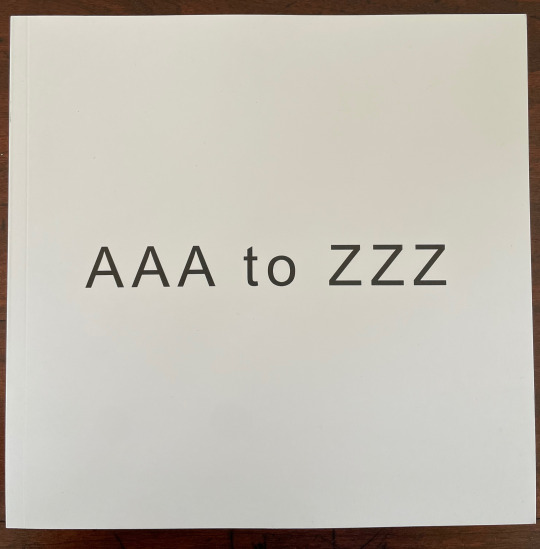
View On WordPress
#Emmett Williams#Francesca Capone#Germano Celant#Guy Bigland#Hanne Darboven#Peter Roehr#Stanley Brouwn
1 note
·
View note
Photo
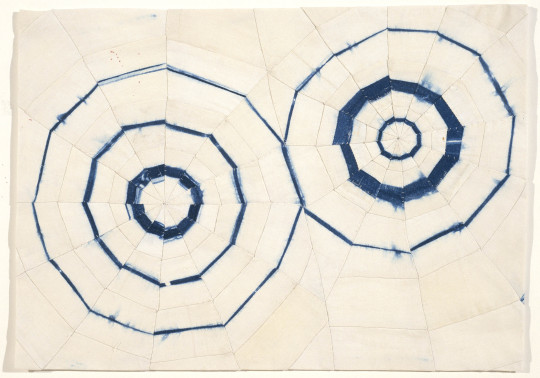
Louise Bourgeois, Untitled, (fabric), 2005 [© Louise Bourgeois Trust. Photo: © Christopher Burke]. From: Louise Bourgeois: 'The Fabric Works', Curated by Germano Celant, Hauser & Wirth, London, October 15 – December 18, 2010
#art#fabric#geometry#pattern#exhibition#louise bourgeois#christopher burke#germano celant#hauser & wirth#2000s#2010s
93 notes
·
View notes
Text
Chiude con 800.000 presenze la Biennale Arte di Venezia di Cecilia Alemani
Chiude con 800.000 presenze la Biennale Arte di Venezia di Cecilia Alemani
È IL NUMERO PIÙ ALTO NELLA STORIA DELLA BIENNALE. NON SI REGISTRAVA UN RISULTATO COSÌ DAL 1976, CON LA MOSTRA CURATA DA GERMANO CELANT
Simone Leigh alla Biennale Arte di Venezia
Nonostante tutti i dibattiti, le critiche positive o negative, o forse anche grazie ad essi, Il latte dei sogni, la mostra a cura di Cecilia Alemani pensata per la Biennale Arte di Venezia, ha chiuso con un grande…
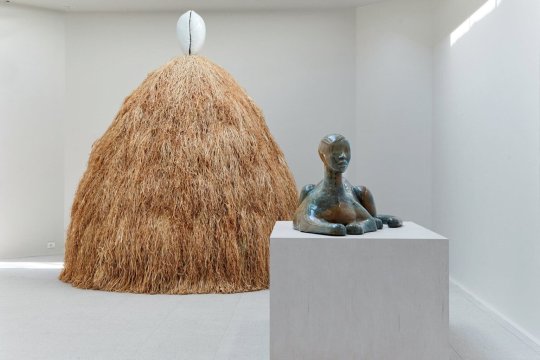
View On WordPress
0 notes
Photo
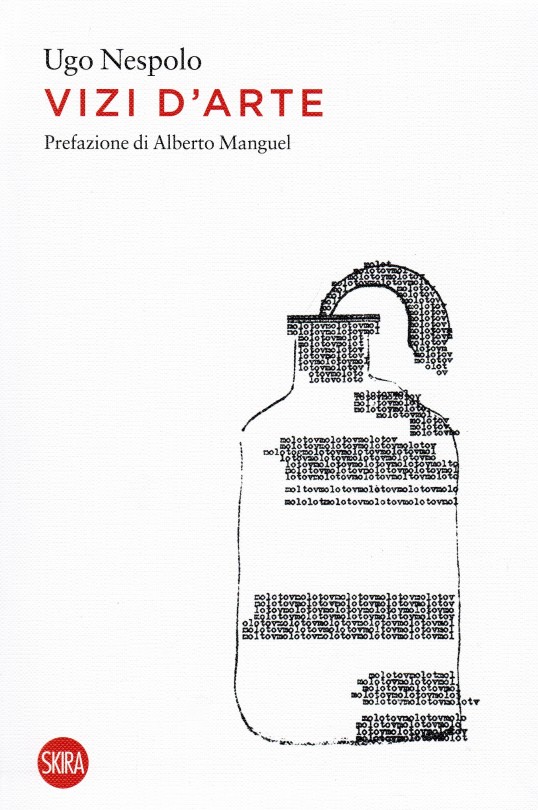
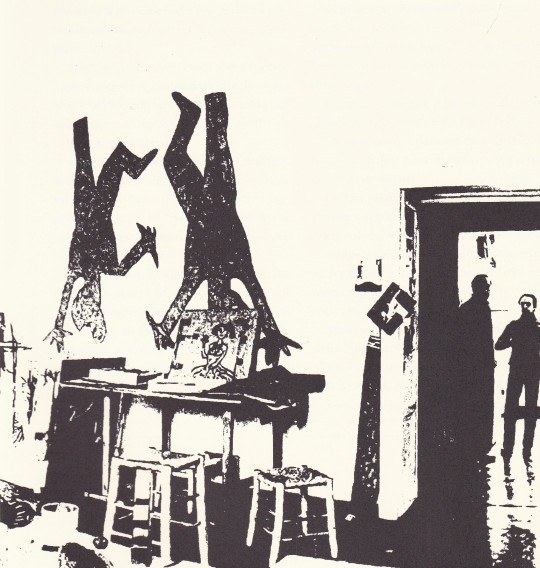
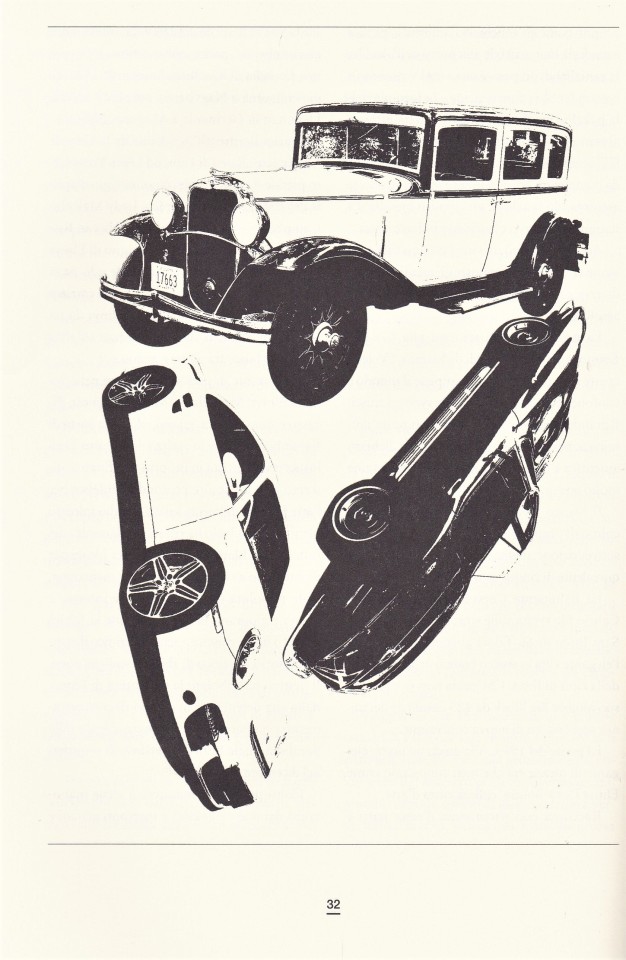
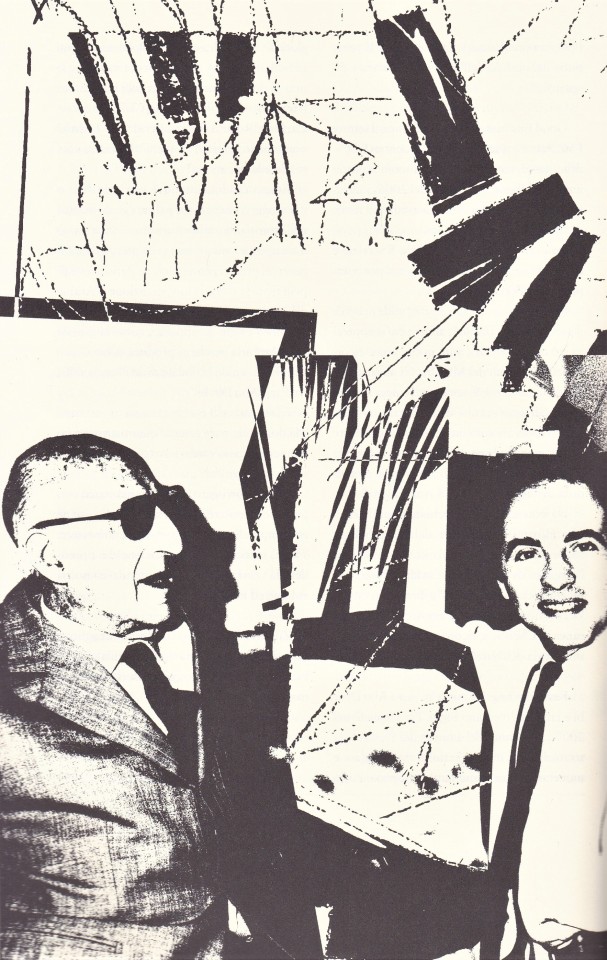
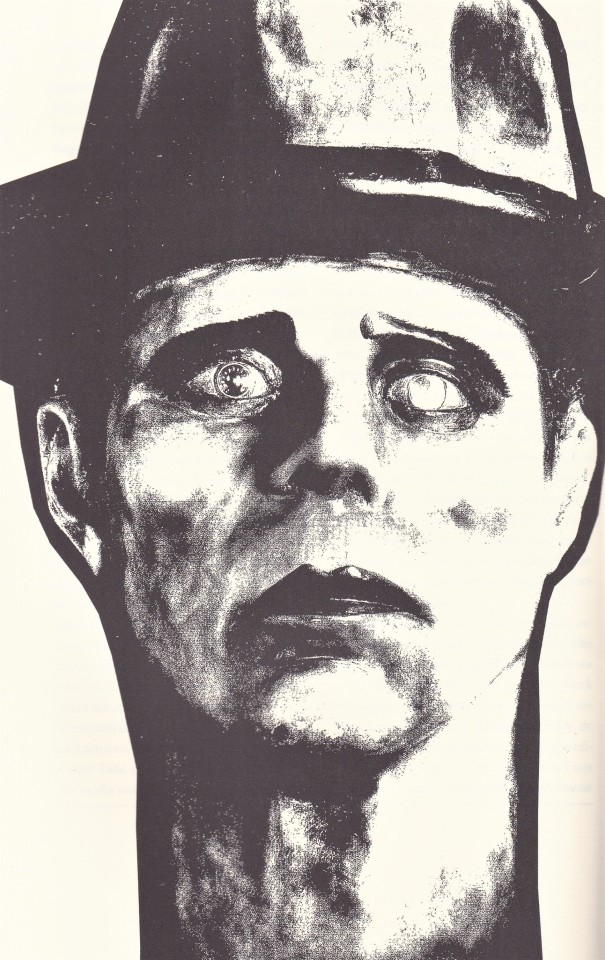


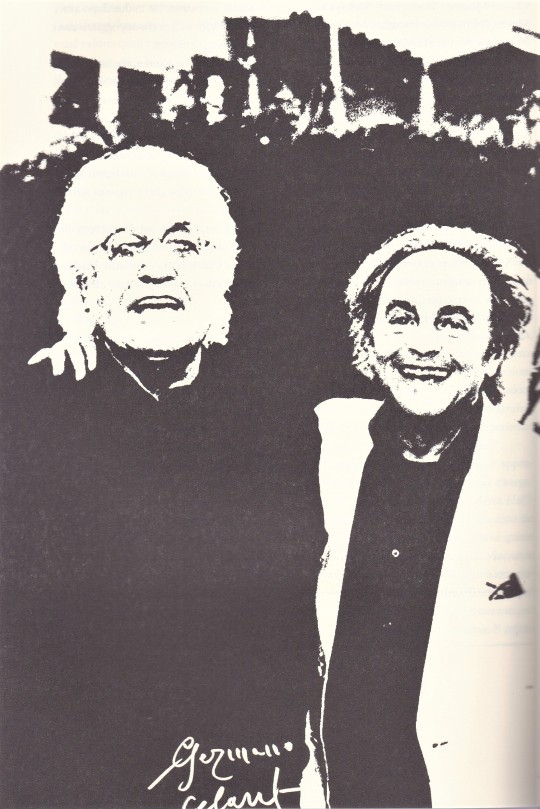

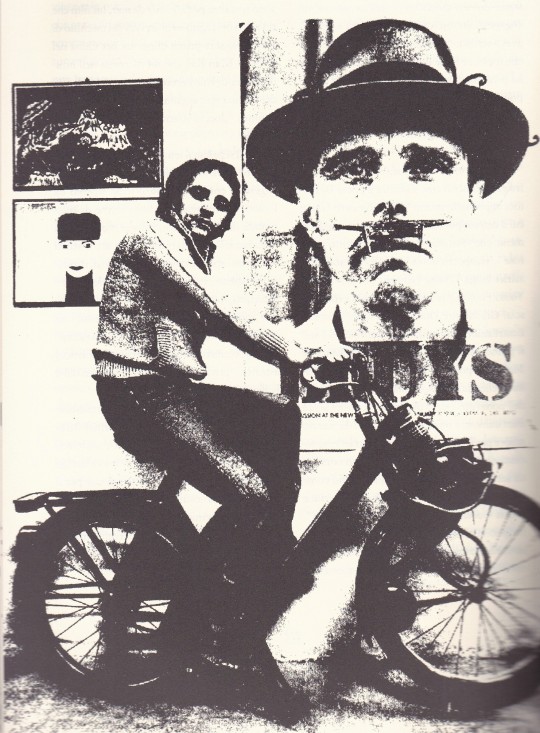
Vizi d’arte Ugo Nespolo
A cyìura di sandro Parmiggiani, Prefazione di Alberto Manguel
Skira, Milano 2022, 312 pagine, 16.5 x 24 cm,Cartonato, ISBN 978-8857249438
euro 29,00
email if you want to buy [email protected]
“Vizi d’arte” è una raccolta di scritti frutto dell’appassionata ricerca critica portata al torbido cuore dell’Artworld. Studio che nasce in Ugo Nespolo come abbraccio affettuoso ma cosciente della vana ambizione che prova a mimare il personaggio di Thomas Carlyle, nel suo On Heroes, quando lo racconta come artista impavido, solitario e disilluso, sorta di aristocratico dell’intelletto intento a condurci verso autonomi ideali di cultura. Sogno fragile, donchisciottismo ingenuo, illusione che in un attimo ci proietta in quella confusa wasteland popolata di figuranti interessati, artefatti senza teoria, assordanti silenzi d’artista, asfissia mercantile. Scritti malinconici, allora, lampi tenui tra cultura e arte, quella che – a sentire Jean Baudrillard – con successo “tenta di abolire se stessa man mano che si esercita”.
"Ugo Nespolo, artista versatile, opera in un ampio campo di discipline, dalla pittura al cinema e alla scultura. Negli anni sessanta lavora con la Galleria Schwarz e la sua prima mostra milanese, presentata da Pierre Restany, in un certo senso precorre il clima e le innovazioni del gruppo che Germano Celant chiamerà Arte Povera. Nel 1967 è pioniere del Cinema Sperimentale Italiano, sulla scia del New American Cinema. A Parigi Man Ray gli dona un testo per un film che Nespolo realizzerà con il titolo Revolving Doors. I suoi film sono proiettati e discussi in importanti musei e istituzioni tra cui il Centre Pompidou a Parigi, la Tate Modern a Londra, la Biennale di Venezia. Nei tardi anni sessanta, con Ben Vautier, dà vita a una serie di eventi Fluxus e in seguito fonda con Enrico Baj l’Istituto Patafisico Ticinese. Sicuro che la figura dell’artista non possa non essere quella di un intellettuale, studia e scrive con assiduità sugli sviluppi dell’estetica e del sistema dell’arte. Ha esposto con grande intensità in gallerie e musei in Italia e nel mondo."

29/03/23
orders to: [email protected]
ordini a: [email protected]
twitter: @fashionbooksmi
instagram: fashionbooksmilano, designbooksmilano tumblr: fashionbooksmilano, designbooksmilano
#Ugo Nespolo#Vizi d'arte#Galleria Schwarz#Arturo Schwarz#Germano Celant#Enrico Baj#Pierre Restany#artworld#art books#fashionbooksmilano
3 notes
·
View notes
Text
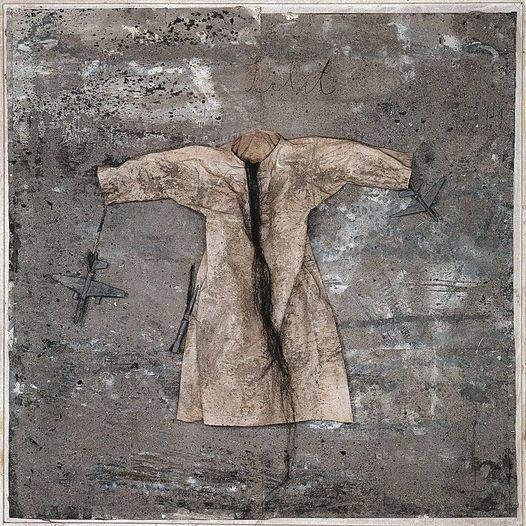
Lilith, 1996 by Anselm Kiefer.
"And I asked myself: what does this city say to me? And I thought of the end of the city, its dispersal into ashes, on the circular movement of all time’ (quoted in Müller 2011, accessed 2 January 2014). This idea of destruction is also evoked by Kiefer’s violent reworking and burning of his canvases.
Kiefer has stated further that Lilith and his other cityscapes involve a reflection on the position of cities ‘between heaven and earth … exposed and fragile’, as well as on the ‘long history of [connections between] towers and vanity’ (quoted in Celant 2007, p.447). Lilith seems to combine both of these ideas by representing very tall skyscrapers, which nonetheless look small and ‘fragile’ due to the work’s extremely high vantage point. Kiefer’s reference to vanity might also suggest another link to the intensely sexual figure of Lilith. In the related painting Barren Landscape Kiefer used human hair to evoke a key feature of Lilith’s purported sensual allure. A similar reference seems to be made in Lilith, although in this work he used coarse, tarnished wire rather than soft hair.
Lilith features several characteristics that are extremely common in Kiefer’s practice, such as the work’s large scale, its very thick application of paint, its combination of mixed media elements with oil paints and its use of muted brown and grey tones, which produce a sombre mood. Kiefer’s works almost always make reference to specific historical and mythological narratives and he has created many other works that relate directly to Jewish mythology."
Further reading
Simon Wilson, Tate Gallery: An Illustrated Companion, London 1991, p.281.
Germano Celant, Anselm Kiefer, exhibition catalogue, Guggenheim Museum Bilbao, Bilbao 2007.
Betram Müller, ‘Menschen noch nicht reif für Atomenergie: Künstler Anselm Kiefer im Interview’, Rheinische Post, 8 October 2011, http://www.rp-online.de/.../menschen-noch-nicht-reif-fuer..., accessed 2 January 2014.
By Lucy Watling
29 notes
·
View notes
Text
"Giulio Paolini. Et in arcadia ego", da nord a sud d'Italia riuniti alla GAM di Verona

"Giulio Paolini. Et in arcadia ego", da nord a sud d'Italia riuniti alla GAM di Verona.
Per la prima volta a Verona i direttori e i curatori dell'Associazione dei Musei d'Arte Contemporanea Italiani – AMACI hanno contribuito alla realizzazione del catalogo della mostra del maestro Giulio Paolini, nata dall'importante collaborazione tra Musei Civici di Verona - GAM e ArtVerona.
Un'idea di Patrizia Nuzzo e Stefano Raimondi, curatori del progetto espositivo ed editoriale.
Una coralità di voci, tra le più autorevoli del panorama museale italiano da Nord a Sud – dal Piemonte con il Castello di Rivoli di Torino, alla Lombardia con la GaMeC di Bergamo e il MA*GA di Gallarate, dal Trentino con il Mart di Trento e Rovereto al Veneto con Ca' Pesaro di Venezia, dal centro con il MAMbo di Bologna fino al MACTE di Termoli e alla Sardegna con il MAN di Nuoro – che ha saputo riflettere all'unisono sui quesiti sempre aperti che muovono la ricerca estetica e filosofica della contemporaneità e che appartengono anche alla poetica di Giulio Paolini, concetti quali l'enigma della visione, il tempo, lo spazio e la bellezza.
Giulio Paolini. Et in Arcadia ego
L'esposizione, attualmente visibile alla Galleria d'Arte Moderna – GAM fino al 25 agosto 2024, è scaturita da un'attenta riflessione intorno alla produzione del maestro Paolini, uno degli artisti più pubblicati e studiati della storia dell'arte contemporanea, alle cui opere sono stati dedicati contributi firmati da nomi autorevoli della letteratura E della storia dell'arte tra cui Italo Calvino, Carla Lonzi, Tommaso Trini, Germano Celant e Giorgio Cortenova.
Il catalogo Giulio Paolini. Et in Arcadia ego, edito da Manfredi Edizioni, ha riunito in un volume - unico per l'eccezionalità dell'iniziativa - i contributo critici dei direttori delle più importanti istituzioni pubbliche in riferimento alle opere protagoniste del percorso espositivo.
Per la presentazione, a cui è intervenuto Giulio Paolini, la Galleria d'Arte Moderna di Verona si è fatta perciò luogo d'incontro tra critici, collezionisti, direttori e curatori.
Alla serata sono intervenuti il Presidente della Commissione Cultura Alberto Battaggia, il Direttore Commerciale di Veronafiere Raul Barbieri, il Presidente AMACI Lorenzo Balbi e la Direttrice dei Musei Civici di Verona Francesca Rossi.
Si sono poi susseguiti, intorno alla figura di Giulio Paolini, gli interventi dei curatori Patrizia Nuzzo e Stefano Raimondi e degli stessi direttori AMACI, accompagnati dalle parole di Bettina Della Casa, Direttrice della Fondazione Giulio e Anna Paolini, di Beatrice Benedetti Curator e Art Advisor e di Bruno Corà Presidente della Fondazione Burri.
La partecipazione di queste Istituzioni pubbliche - iniziativa inedita nel panorama editoriale artistico - riflette anche la volontà di consolidare la rete AMACI e offrire un'opportunità per presentarla come realtà viva, prolifica, composta da musei che lavorano in sinergia per creare progetti di rilievo all'interno del panorama culturale italiano.
La presentazione è stata un'occasione per ribadire quelli che sono i valori fondanti dell'associazione, come l'importanza della partecipazione attiva e del dialogo con gli altri soggetti operanti in ambito culturale, l'impegno nel trasmettere al pubblico la conoscenza dei grandi protagonisti dell'arte e nel sostenere le politiche istituzionali legate alla contemporaneità.
"La mostra dedicata a Giulio Paolini – dichiara l'assessora alla Cultura Marta Ugolini –, uno dei protagonisti più significativi nel panorama della cultura artistica internazionale e riferimento ineludibile nell'ambito dell'indagine concettuale, ha rappresentato un ritorno importante dell'artista nella città scaligera, dove nel 2000 aveva ricevuto il Premio Internazionale Koinè alla carriera. L'incontro con Paolini costituisce un contributo prezioso e stimolante di riflessione rispetto ai valori e alle istanze dell'arte contemporanea. Con la sua spiccata ironia e i suoi modi garbati, l'artista arricchisce la conoscenza di chi ha l'opportunità di lavorare al suo fianco e questa pubblicazione offre l'occasione per consolidare ulteriormente la collaborazione tra importanti istituzioni culturali attive sul territorio nazionale".
"L'iniziativa dimostra l'affetto per il maestro Paolini che è ritornato ad esporre a Verona dopo vent'anni e ha voluto donare alla città, per la GAM, anche alcune opere – afferma la Direttrice Francesca Rossi –. Inoltre riflette il forte impegno che i Musei civici di Verona stanno dedicando al rafforzamento della rete di collaborazione tra i musei e i luoghi della cultura. Un appuntamento nel segno della coesione, dove i musei veronesi si propongono come un laboratorio di dialogo e condivisione di idee, progetti e buone pratiche per la disseminazione della conoscenza del patrimonio artistico e lo sviluppo culturale ed educativo delle comunità di riferimento."
"Il catalogo di Giulio Paolini e la relativa mostra sono la testimonianza di come ArtVerona si estenda oltre i confini commerciali, e sappia costruire, grazie alla competenza dei più importanti direttori dei musei italiani e dei curatori, eventi significativi in grado di lasciare il segno nella storia dell'arte" ha dichiarato Raul Barbieri, Direttore Commerciale di Veronafiere S.p.A. intervenuto alla serata di presentazione.
La mostra Giulio Paolini. Et in Arcadia ego, da cui il catalogo ha preso forma - inaugurata lo scorso 15 ottobre 2023 e accolta positivamente dal pubblico e dalla critica - è stata prorogata fino al 25 agosto 2024....
#notizie #news #breakingnews #cronaca #politica #eventi #sport #moda
Read the full article
0 notes
